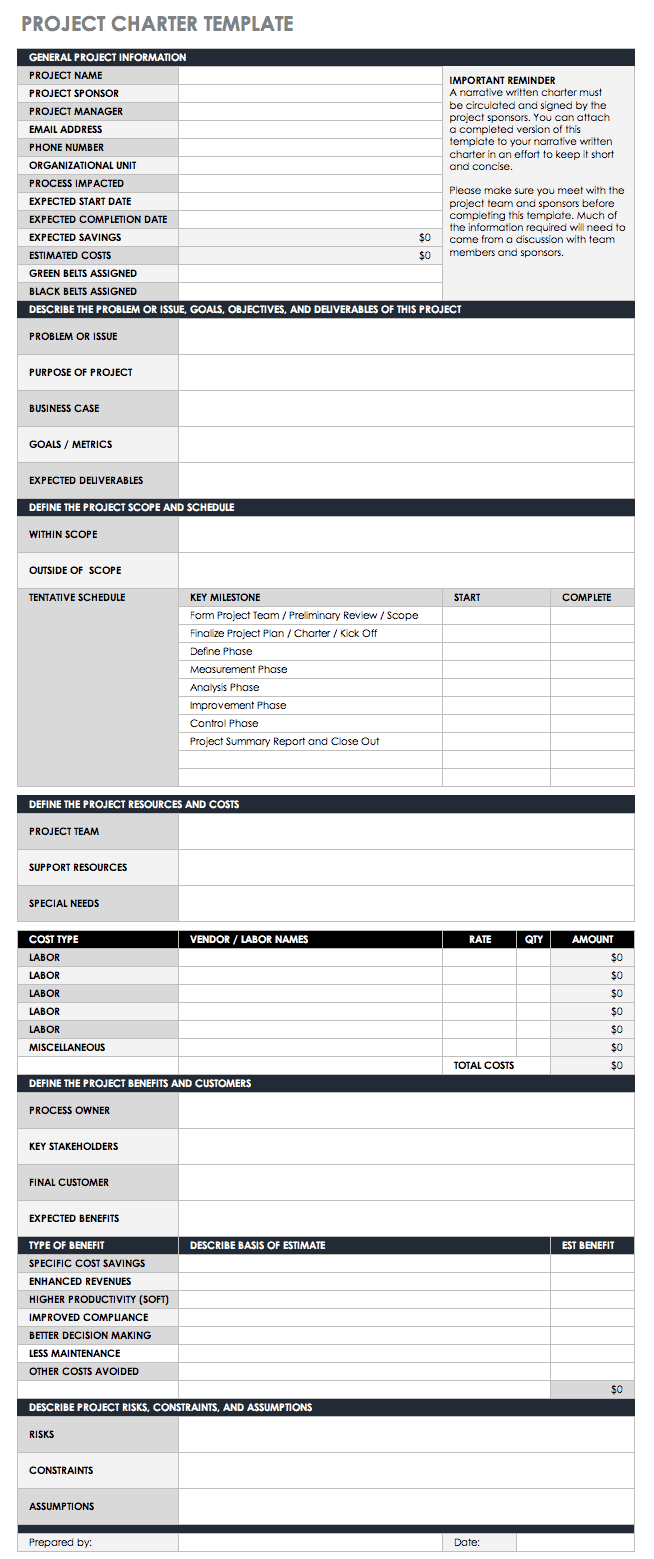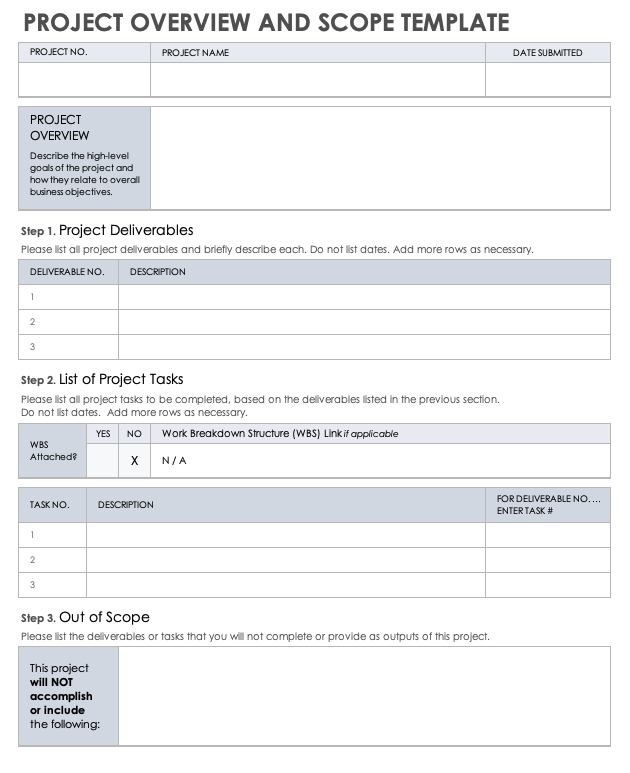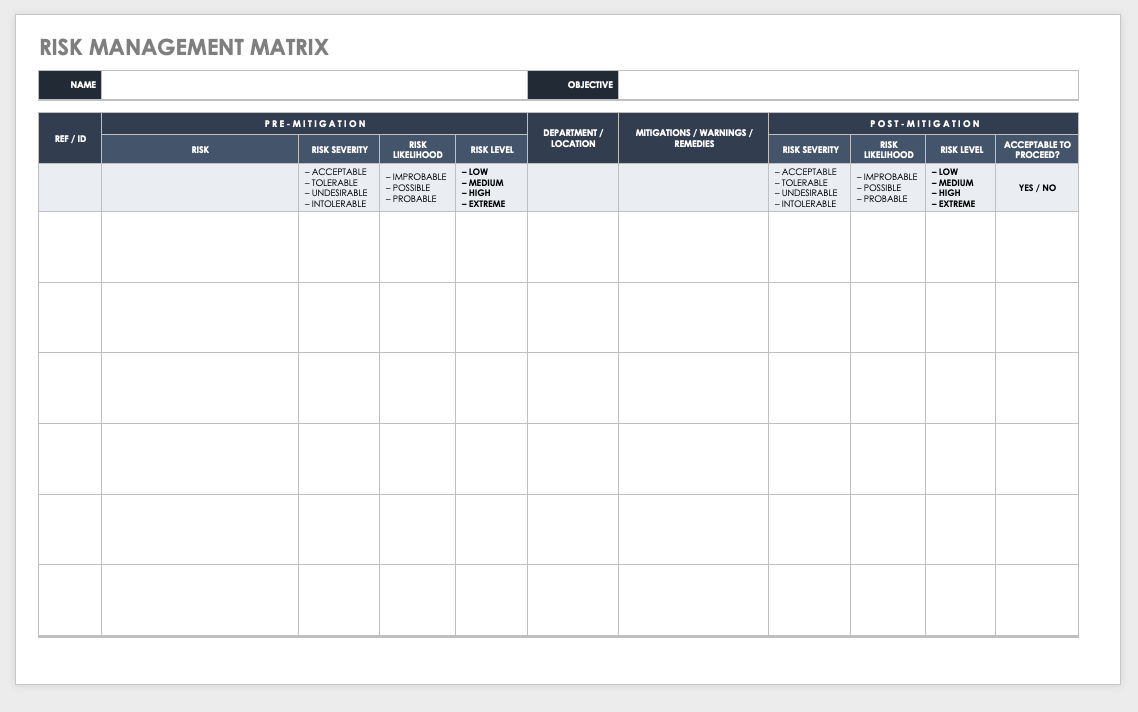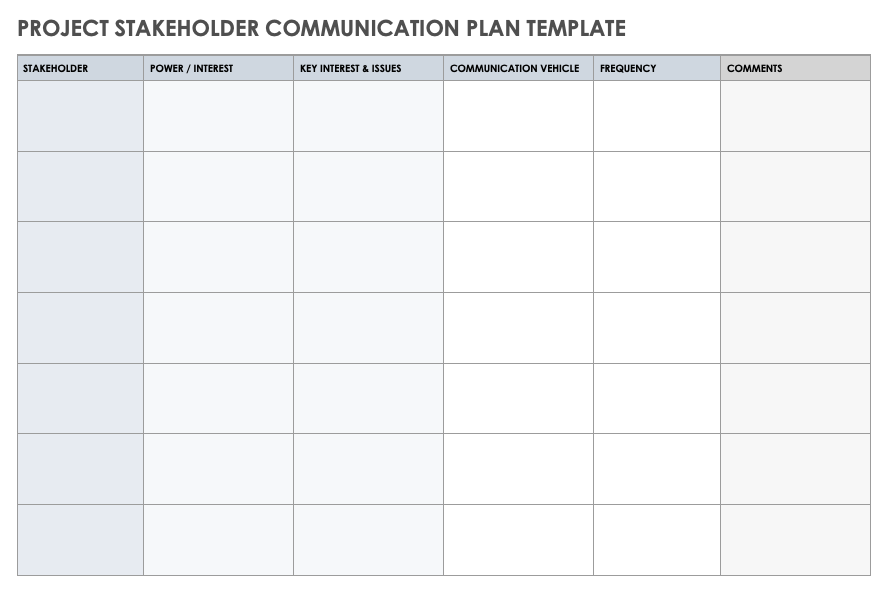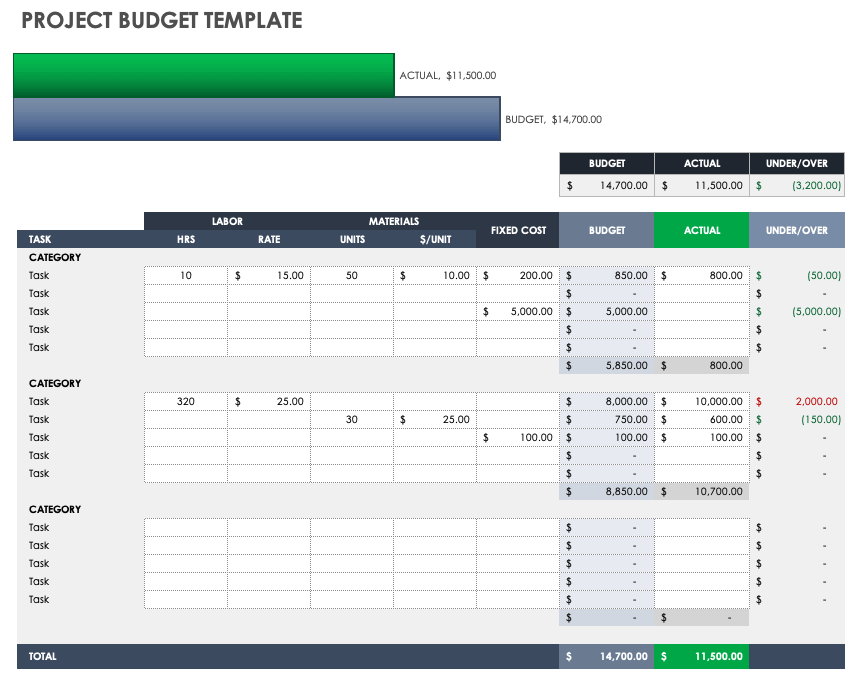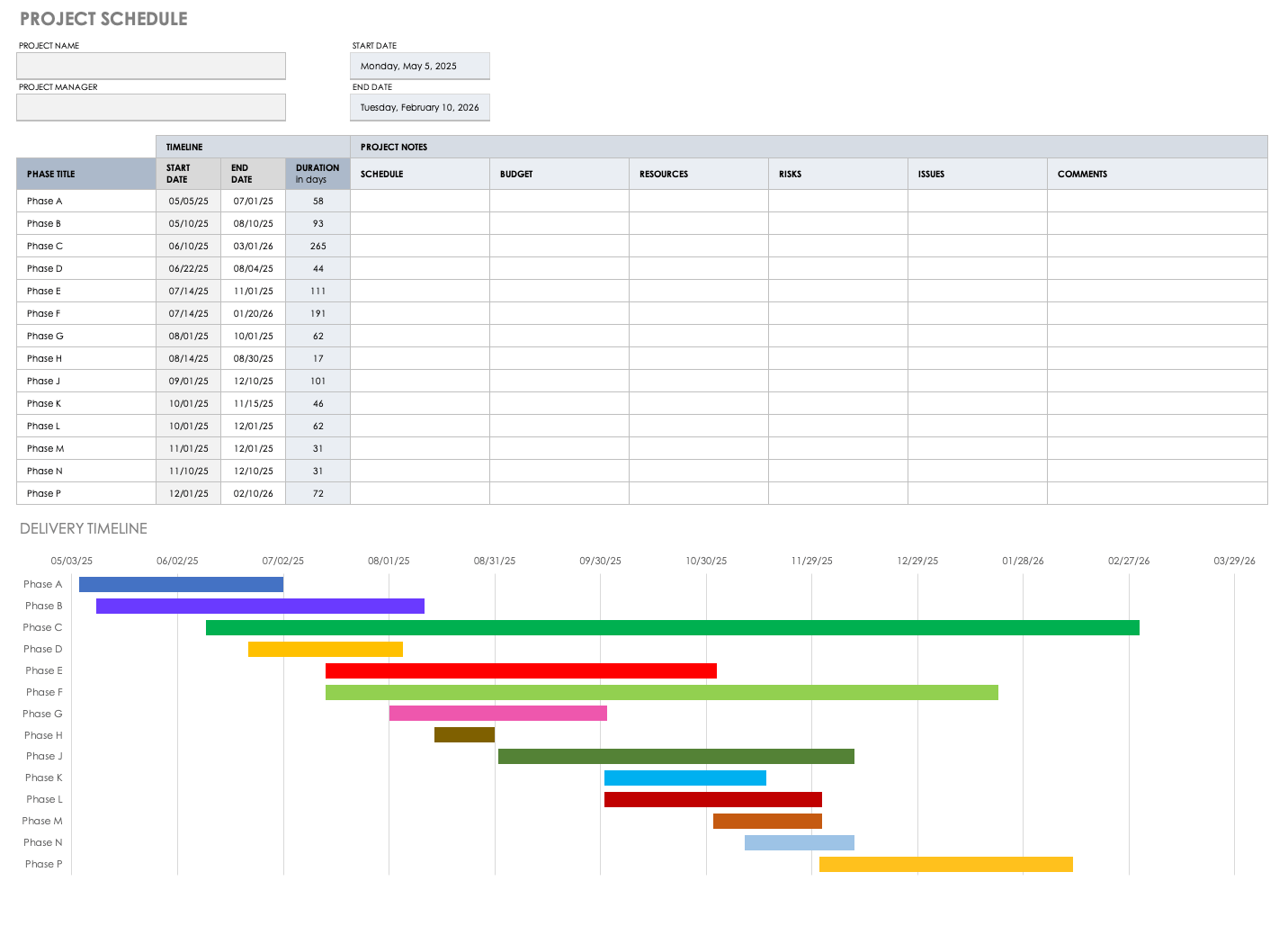What Is a Project Charter?
A project charter is a summary of a project or a project phase. Most project charters include the project overview, scope, goals, budget, timeline, stakeholders, and risks. Use a project charter as a guide for completing a project.
A project charter marks the beginning of project planning. Project sponsors also use project charters to authorize the project. Project managers should update the charter to reflect changes as the project progresses, but it is not as detailed as the project plan. To learn more about project planning, read this guide to creating a project plan.
“A charter is a powerful document developed at the start of a project that remains essential throughout. It should detail the scope (and at times what is out of scope) and approach for completing the project. The charter should also contain key information such as the reason for the project, the benefits of the project, and the names of team members and sponsors,” explains Michelle Campbell, Senior Vice President of Citi.
Elements of a Project Charter
Most project charters contain the same core elements. These elements include project goals, scope, estimated budget and timeline, team members, stakeholders, and potential risks. Include all of these elements to ensure that your project charter is helpful.
A project charter should include the following elements:
- An overview of the project’s goals
- An outline of the project’s scope
- An estimated budget
- An approximate schedule for deliverables
- The names of team members and stakeholders
- Potential risks the project may face
These elements may differ slightly based on your industry and the nature of your project. To learn more about how to create each of these components, read this guide to the elements of a project charter.
Project Charter Template
Download Project Charter Template
Microsoft Excel
|
Microsoft Word
|
Microsoft PowerPoint
| Google Docs | Smartsheet
Use this project charter template to outline your next project for review and approval by its sponsor. This fully customizable template has space to include your project overview, schedule, scope, resources, budget, and anticipated risks so that you can plan and manage progress.
For more options, see this collection of additional project charter templates for Agile, construction, and Six Sigma projects.
What Is the Purpose of a Project Charter?
A project charter provides a high-level overview of the project’s conditions and objectives. For some projects, creating the charter is the first step. For larger projects, teams create a charter at the beginning of each new project phase.
“A project charter gives project managers the green light to plan and execute the project,” says David Reid, Sales Director at VEM Tooling. “It outlines the specific standards for meeting the stakeholders' needs and defines the project manager's authority.”
The charter also provides context for both the project’s sponsor and stakeholders to understand what the project requires, the problems it will solve, and the benefits and deliverables it will produce. It should give all parties an overview of the budget and resources required, along with an estimated schedule for deliverables and milestones. In addition, it should highlight any potential risks and roadblocks, as well as contain a list of stakeholders and their roles within the team.
Project managers should update the charter as the project progresses in order to reflect any major changes to any of these elements. A large project may have more than one charter. These might simply be different drafts, or it could be a new charter for each major project phase.
Main Uses of Project Charters
Use a project charter to authorize the existence of a project, establish its goals, and provide an overview of the project’s status. Project managers, teams, and sponsors all use the charter to summarize a project and keep it on track.
The following are the main reasons to use a project charter:
- Act as the Primary Reference Document: Your project charter can serve as the primary reference document for future projects. Historical budget and schedule information is a valuable resource for budgeting and scheduling future projects.
- Act as the Primary Sales Document: The project charter functions as a quick reference for anyone curious about project details. Employees can use the charter in meetings or during customer pitches as an example of what a company is currently working on.
- Authorize a Project: The project charter acts as proof of project authorization. Once the project sponsor signs the charter, the project manager can officially begin.
- Define Success Metrics: In addition to the project’s goals, the project charter helps to define the metrics that will be used to measure a project’s success.
- Mark the Beginning of Projects and Phases: A project charter marks the start of a project or of separate project phases. Many large projects create a new charter for each major phase of a project.
- Provide Visibility: The project charter allows everyone to quickly reference a project’s goals and the processes that will be used to achieve them.
- Reflect Real-Time Project Maturity: A project charter should evolve with a project. It should always reflect the current status of each element as it matures throughout the project’s lifecycle.
- Secure Executive Support: A project charter is a proof of concept for a project and can be used to attain executive support. A well-executed project charter gives an executive a quick but thorough overview of all major elements of a project.
Project Charter Roles and Responsibilities
A project charter helps establish a strategy and general project process. Typically, a project manager works with a sponsor to create the charter. The sponsor then reviews the charter and provides approval for the project.
A project charter is the first point of reference for project information, so it can demonstrate how project resources will contribute to goals and support business objectives. It can also reinforce consistency in scheduling tasks and in creating project budgets by using templates and building upon processes that have been successful in the past. Establish a system of improving your templates and tools, and use your past project charters as a guide for future projects.
Who Writes the Project Charter?
Usually, a project manager works with the project’s sponsor to create the charter. After the sponsor proposes a project, the project manager drafts the charter. The charter acts as a roadmap to the project’s successful completion.
Writing a project charter is a critical step in project planning. To learn more about how to put together your own charter, read this guide to creating an effective project charter.
Who Signs the Project Charter?
A project sponsor must approve and sign the project charter before a project or phase begins. The sponsor will review and revise the charter, as well as ensure that all elements are in line with the organization’s goals.
The sponsor should continue to review any major changes to the project charter as they arise. The project managers should update the charter to reflect changes as they are made.
Benefits of a Project Charter
Project charters come with many benefits for a business, including easy access to project information, better project visibility, and increased buy-in from sponsors. You can ensure projects are delivered on time and under budget with a project charter.
A project charter provides several benefits, such as the following:
- Better Buy-In: A project charter helps project sponsors feel more secure in their approval of a project’s methods. Sponsors are more likely to support initiatives from project managers who can present their plans in an organized and consistent fashion.
- Better Documentation for Future Planning: Your project charter should become the reference point for all future project documents, especially your final project plan. A well-made charter acts as a solid outline for further project development.
- Clearer Approvals: The project charter serves as official authorization for the project manager to start a task. It gives them the written authority to undertake planning and spending to achieve the project’s ultimate goals.
- Easier File Sharing: Your project charter is a categorical project overview that fits onto a page or two, making it easy to share and for others to understand. “The project charter is beneficial primarily because all of the project's basic information is contained in a single document. As a result, it can both aid the team early in seeing the big picture, as well as individuals who join the project later,” explains Reid.
- Easier Internal Marketing: Use your project charter as a brochure to share your broad project details and help explain your project to anyone who is not directly involved.
- Increased Project Visibility: Creating and using project charters helps establish a culture of project visibility. Executives can check on project details at any time. The charter may also answer a manager’s questions before they have to take time from their day-to-day responsibilities.
- More Effective Communication: Your charter is the first source of project information for all parties and acts as a focal point for communication. “Using your project charter as a planning tool and a source of truth helps save time and minimize difficulties caused by miscommunication,” says Reid.
Misconceptions About Project Charters
There are some misconceptions about project charters. Some managers believe that project charters are too formal or cannot change once the project begins. These misconceptions can prevent managers from seeing the benefits of a project charter.
These are the six most common misconceptions you may have about project charters:
- Misconception 1: Project Charters Are Optional. Your project charter is the base upon which you build your project and is therefore indispensable. Managers need project charters to organize project details, build out a project plan, and authorize the project to begin.
- Misconception 2: Project Charters Cannot Change. Your project charter is a living document. It can and should change to reflect the current reality of your project. Projects are not always perfectly linear, especially Agile projects, and your charter might not look exactly the same at the end of the project as it did at the beginning.
- Misconception 3: Project Charters Are Long and Formal. Your project charter should be thorough but concise, fitting on one or two pages. A project charter is most useful when it is easy to read and share.
- Misconception 4: Project Charters Are for Project Managers and Sponsors Only. A project charter should include input from everyone involved with the project. “I wish I knew not to write a charter and then have it approved by the sponsor in isolation,” says Campbell. “Today, I review the draft charter with my team. In doing this, my team takes ownership of the project and the associated tasks. Buy-in is critical and powerful.”
- Misconception 5: Project Charters Mitigate All Risks. Creating a project charter is a good way to identify and mitigate risks, but it cannot do everything. “A project charter will not shield you from errors resulting from misunderstanding the risks involved. You may still wind up with unsatisfactory results if you do not calculate the circumstance correctly,” says Reid. It is still critical to implement risk management practices into your processes, even while using project charters to help identify project risks.
- Misconception 6: Making a Project Charter Is All Guessing. Project managers should assemble their charters using real information from your past and current projects. There should be no guessing involved. Use your past budgets and schedules from similar projects to create projections that are as accurate as possible.
Pitfalls to Avoid with a Project Charter
A project charter must include accurate information in order to be useful. Avoid common pitfalls, such as budgeting errors, unclear language, and outdated information. This will keep your outline, objectives, and methods accurate and helpful.
Look out for these common pitfalls when making and using a project charter:
- Avoid Inflexible Budgets and Timelines: Your project charter should include budget and scheduling information that is as accurate a projection as possible. However, the budget and timeline should not be so rigid that you can’t change it as the project progresses. “The most common mistake people make with their project charters is not allowing space and time for the documentation of early assumptions. By not illuminating early assumptions, we risk estimation errors, significant conflict, and even the failure of the project,” explains Campbell.
- Avoid Missed Feedback: If you are new to creating project charters, use the expertise of your colleagues to help you. “Have an experienced project manager review your charter before reviewing it with your team. You may be surprised by the valuable feedback and insights,” suggests Campbell.
- Avoid Outdated Information: Update your charter as changes are made to processes and schedules. Your charter should always be up to date and reflect current project details.
- Avoid Resource Mismanagement: It is important to understand the resources you will need and the resources you have available before finalizing your project charter. “Putting your resources to good use through your project charter can be tough if you don't know exactly what you have,” says Reid.
- Avoid Unanswered Questions: Your project charter should include all of the common project charter elements and a preliminary plan for each. Your project charter is not complete until every section is filled out.
- Avoid Unclear Language: All elements of your project charter should be clear and unambiguous. Use simple language when creating your overview and scope statements. Use real dates and finalized numbers for schedules and budgets whenever possible.
- Avoid Unchartered Projects: Unchartered projects are the first to be canceled when executives are looking to cut back. “Your charter appeals to executives by outlining the specific standards for meeting the stakeholders' needs, and it defines the project manager's authority. A project can be canceled at any time and for any reason without a project charter,” warns Reid.
Project Charter vs. Project Plan
A project plan is a more in-depth version of a project charter. They share many of the same elements. Your project plan should build upon your charter and use real dates and estimates for schedules and budgets.
If a project charter is an initial brainstorm for a project, the project plan is a collection of the actual steps you will take to achieve the project’s goals. Once the project sponsor has signed off on the project charter, the project manager should get to work on finalizing schedules, budgets, and team members in the concrete project plan.
Project Charter vs. Project Scope
The project scope is part of a project charter. In a charter, the scope statement should lay out what is in scope for the project. It should also include specific items that are out of the project’s scope.
Scope statements are sometimes standalone documents that fall under the umbrella of project scope management. However, they should also be a part of every project charter for projects of all types and sizes, and in all industries. To learn how to create a scope statement, check out this collection of project scope templates.
Project Charter vs. Business Case
A business case describes why a project is good for your business. It also includes any potential project risks. A project charter might include a business case but is more focused on organizing and planning the project.
A business case outlines the return on investment (ROI), investment numbers, and resource costs, and is focused on monetary value and time spent. To learn more about business cases, read this comprehensive how-to guide with examples.
Project Charter vs. Program Charter
A program charter is another name for a project charter. It might also refer to a charter for a small group of related projects. Typically, this group of projects isn’t as broad as a portfolio.
Project Charter vs. Statement of Work
A statement of work is a contract written for clients that outlines the work to be completed and deliverables for a project. Teams use the project charter to begin planning their work.
A statement of work is a valuable document for any company that deals with clients or works together with outside contractors. To learn how to create one, read this guide to writing a statement of work.
Project Charter vs. Project Brief
A project brief is a simplified project charter. It should be a single page long, and anyone should be able to understand it at a glance. A project brief acts as a brochure to describe the most high-level project details.
How to Start Using Project Charters at Your Company
It can sometimes be difficult to make a big change within your organization. Use these tips to help ease the process of introducing project charters to your company:
- Use a Template: Begin by using a pre-built project charter template and adapting it to your needs. A template provides a quick and foolproof foundation to start organizing your project details.
- Get Your Sponsors on Board: Project sponsors will likely see the value of a project charter immediately. Once they are on board, it is easier to gain support from the wider organization.
- Establish a Process: Make project charters a requirement for project authorization. Before long, using project charters will be second nature.
- Reference and Share It: Use your project charter as the basis for your project kickoff meetings, and make it accessible for anyone to read at any time. Use it as a source of truth for project procedures and details.
Project Charter Starter Kit
Download Project Charter Starter Kit
We’ve created this project charter starter kit to help you create and build on your project charter. In this kit, we’ve included a project charter template, an overview and scope template, a stakeholder communication plan, and detailed project and budget templates.
All of these templates are fully customizable to suit the needs of projects of any size. Use these templates to organize your ideas, to create a new project charter, to build on the elements of an existing charter, or to start building out your ultimate project plan.
Project Overview and Scope Template
Download Project Overview and Scope Template
Microsoft Excel
|
Microsoft Word
| Google Docs
Use this template to organize your overview and scope details while creating your project charter. This customizable template includes space for deliverables and project tasks, as well as an overview section and space to list specific out-of-scope items.
Risk Management Matrix Template
Download Risk Management Matrix Template
Microsoft Excel
|
Microsoft Word
|
Adobe PDF
| Smartsheet
This risk management matrix can help you expand on the risks outlined in your project charter so you can create a plan to manage them. Use the template to visualize an overview of risk ratings and likelihoods, and to analyze their potential impact before and after mitigation.
Project Stakeholder Communication Plan Template
Download Project Stakeholder Communication Plan Template
Microsoft Excel
|
Microsoft Word
|
Adobe PDF
Use this project stakeholder communication plan template to outline a communication schedule and to expand on your project charter. This customizable chart contains stakeholder information, their preferred communication method and frequency, and the items they are most interested in hearing about.
Project Budget Template
Download Project Budget Template
Microsoft Excel
| Smartsheet
Your project charter should include basic budget information. Build on that information with this more detailed, dedicated project budget template. Use this template to project and track project costs related to each task, including labor and materials required.
How to Pick the Right Tool for Planning and Upholding a Project Charter
Many software tools are available for planning and upholding a project charter, but the best ones allow you to organize and keep all elements in one place. The most useful tools allow you to build out, link, and edit and share each part of your project charter.
To learn more about project management software and tools, check out this overview of project management software.
Why Smartsheet Is the Best Choice for Managing Projects with Project Charters
From simple task management and project planning to complex resource and portfolio management, Smartsheet helps you improve collaboration and increase work velocity -- empowering you to get more done.
The Smartsheet platform makes it easy to plan, capture, manage, and report on work from anywhere, helping your team be more effective and get more done. Report on key metrics and get real-time visibility into work as it happens with roll-up reports, dashboards, and automated workflows built to keep your team connected and informed.
When teams have clarity into the work getting done, there’s no telling how much more they can accomplish in the same amount of time. Try Smartsheet for free, today.

